#Sengoku era
Text


Am I in pain? Hell yes I am, because do you actually know what this means? Despite of the horrible feeling that you are never wanted, that you bring misfortune? How traumatic must that have been for a small child, that he doesn't want to talk at all.
But the father is also to be pitied because he himself was stuck in his superstitions, which at the moment were more important than the love to his wife. Only Akeno-san's death opened his eyes, because he also loved his son in a way, but he was broken (as many characters).
In a way Yoriichi is in one point very much like his fathers son, if it is about the love of their life. They can't fall in love again and can't remarry. Choosing solitude over everything. How pure must his love for Uta have been? How hurt must he have been if he was not able to move for 10 days away from her corpse. Not drinking or eating anything. What strain must that be on his body and soul. (I am still crying everytime when I read chapter 186)
But he was also healing in a way. Especially after 2 years when he went to Sumiyoshi and opened up, talking about everything that had happened to him. And still, nobody was able to fill the emptiness in his heart that Uta's death left behind.
#I am in great pain but its okay because we all are kind of addicted to this kind of angsty pain#demon slayer#kimetsu no yaiba#sengoku era#sengoku rumors#yoriichi tsugikuni#tsugikuni yoriichi#uta tsugikuni#tsugikuni uta#Yoriichi x uta#yoriuta#sunny talks ☀︎
94 notes
·
View notes
Text
Yasuke, as described in Matsudaira Ietada's diary
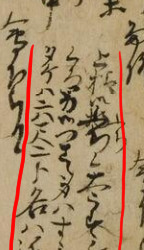

The entry is from the 19th of the 4th month, Tenshō 10 (21 May 1582).
The image with the brown paper is purportedly the original book (or at least an older copy), and the cleaner one is a later date copy.
上様御ふち候、大うす(デウス)進上申候、くろ男御つれ候、身ハすみノコトク、タケハ六尺二分、名ハ弥助ト云
Ue-sama (Nobunaga) was accompanied by a black man in his employ, whom he received from the Deus (European missionaries). His body was like ink, his height 6 shaku 2 bu (182.5 cm)/6 shaku 2 sun (188 cm), and his name was said to be Yasuke.
Previously I had heard of stories that Yasuke accompanied Nobunaga on his inspection of Iga, but it appears to be incorrect information, because I could not find the source of it anymore. This Matsudaira Ietada diary says that this occasion was when Nobunaga returned from his campaign against the Takeda.
#yasuke#japanese history#sengoku#sengoku period#sengoku era#matsudaira ietada#matsudaira ietada diary
12 notes
·
View notes
Photo
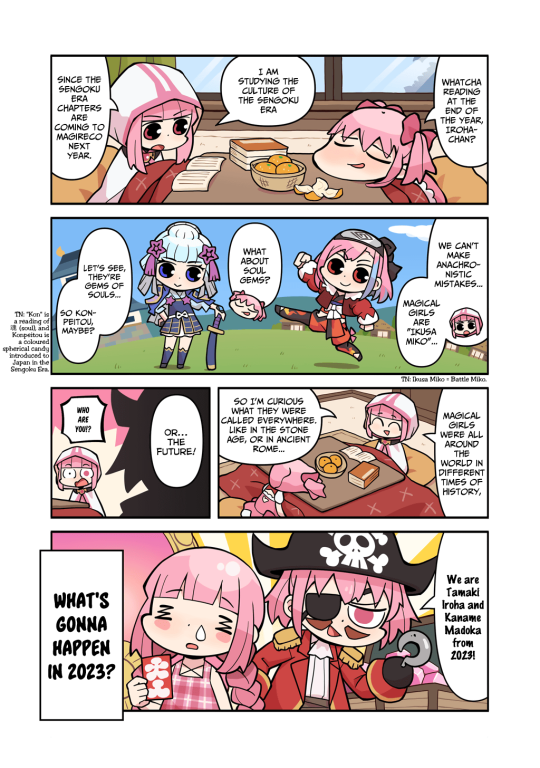
Magia Report S2E263 [TFO Scans]
55 notes
·
View notes
Text

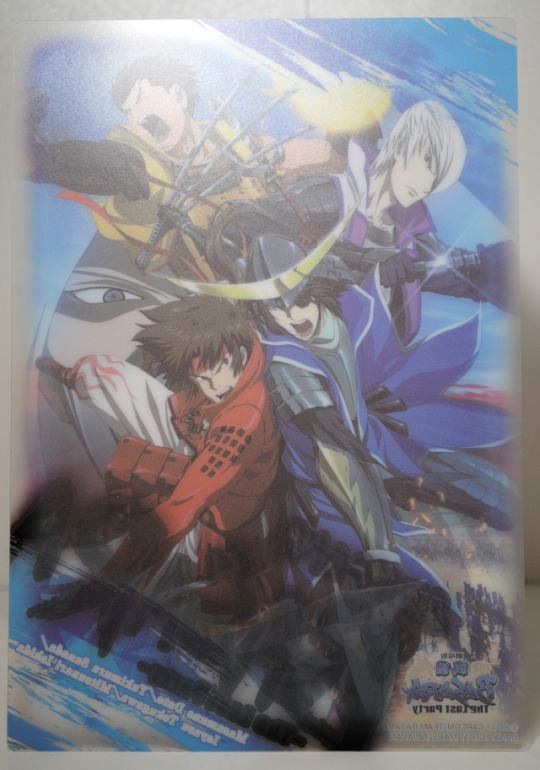
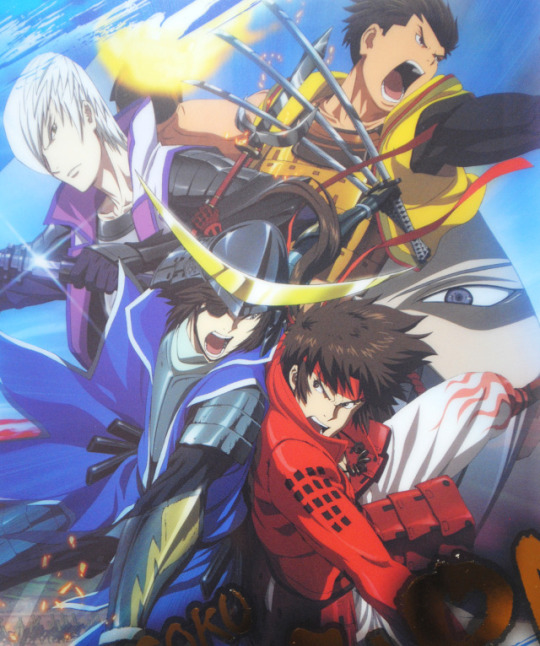
Sengoku Basara: Date Masamune/Sanada Yukimura/Tokugawa Ieyasu & Ishida Mitsunari - Character Card
Size: A5(210 x 148mm)
Price: 7€/12USD
(Shipping price not included)
Units Available :1
(Send us a message or comment if you’re interested)
#Sengoku Basara#date masamune#sanada yukimura#tokugawa ieyasu#anime#otome#oneesanmarket#all products#manga#kawaii#cute#oneeesanmarket#otaku#ikemen#weeb#old anime#sengoku#sengoku era#sengoku wars#sengoku lords#anime men#anime man#anime boys#character card#photocard#pc#anime photocard#anime poster#posters#clearfiles
6 notes
·
View notes
Text





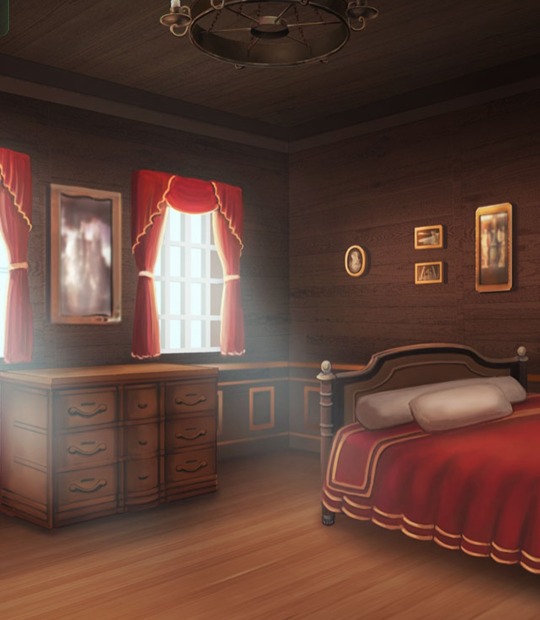

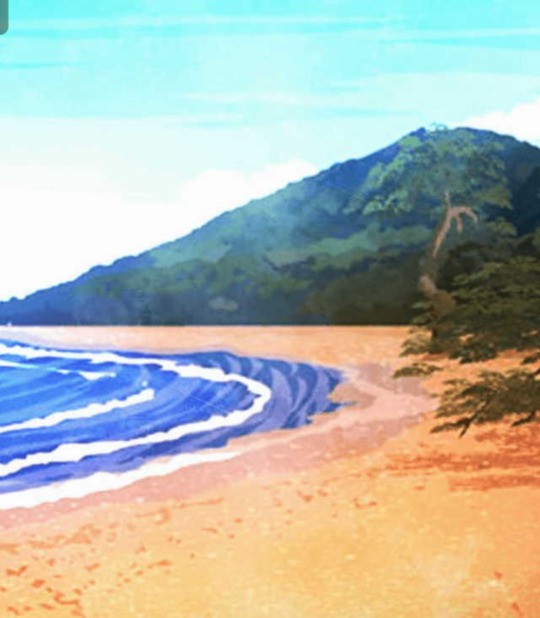

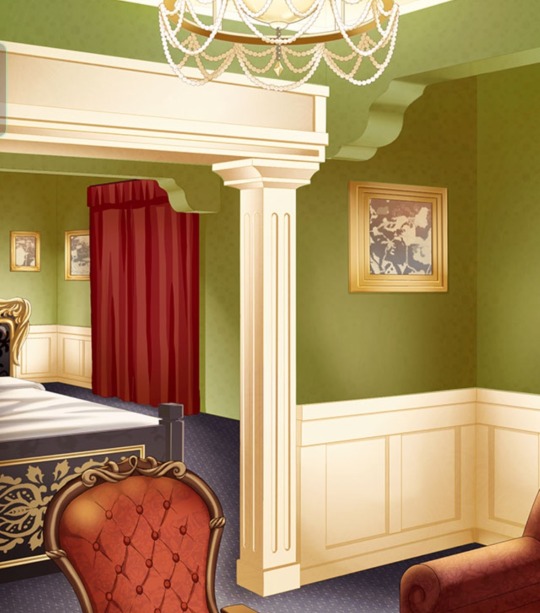
IKEMEN SENGOKU: MOTONARI'S ROUTE
#ikemen sengoku#motonari mouri#motonari's route#backgrounds#designs#sengoku era#art#architecture#interiors#outdoors#indoor#japanese architecture#western architecture#sea#ship#hotel#ballroom#castle#hallways#garden#seashore#kitchen
32 notes
·
View notes
Text
Couldn't sleep so I drew a random concept I just came up with: Hanji Zoe as a Sengoku Era Demon Slayer, named Hanshin.

And, with glasses:

And as for the backstory or info:
-Her story is generally similar to a KnY equivalent of Mulan, I guess. That, or her family gave her a male name and raised her like a boy probably for inheritance reasons or something.
-Nobody knows where she got those glasses, but either way she sometimes used to wear them even though they were very impractical in battle (as these are basically like, the first type of glasses that have ever been invented or something, and it seems very difficult to keep them on your face without using your hands. They seem kind of flat for that matter.)
-Fortunately she soon learned how to see the transparent world from Yoriichi, and so the problems with the glasses were solved for the most part.
-She uses several different breathing techniques but I guess the one she prefers would be something similar to an owl version of the Beast Breathing. She's also trying to learn and master Sun Breathing.
-At some point, Yoriichi discovers that she's a woman in disguise, but keeps her secret and never reveals it and never changes his attitude towards her. Well, now that I think of it, the transparent world wouldn't really make that remain a secret for long so let's just say nobody thought of looking her way with that technique, ever, just maybe Yoriichi did once for training purposes.
-I think in the end, she retires for some personal reasons when she's nearly forty, or she masters the sun breathing and gets killed by Muzan and Kokushibo. I am trying not to angst myself to death so I'll say I prefer the first option, as the original Hanji dying was horrible enough already ahaha.
-So if she retires and all, I guess she'll end up being good friends with Lady Tamayo and helps her with her research and all. I also think she's always been very curious about the demons just like how Hanji was with the titans.
-Lastly, I thought of the possibility of her having feelings for Yoriichi and/or vice versa, which is rather unlikely but ehh, just a thought lol. (I might just dig crossover ships a bit too much. I might leave this for a crossover modern AU deal, though.)
#kny#aot#demon slayer#attack on titan#fan art#anime fan art#crossover#shingeki no kyoujin#snk#hanji zoe#hange zoe#sengoku era#yoriichi tsugikuni
88 notes
·
View notes
Text
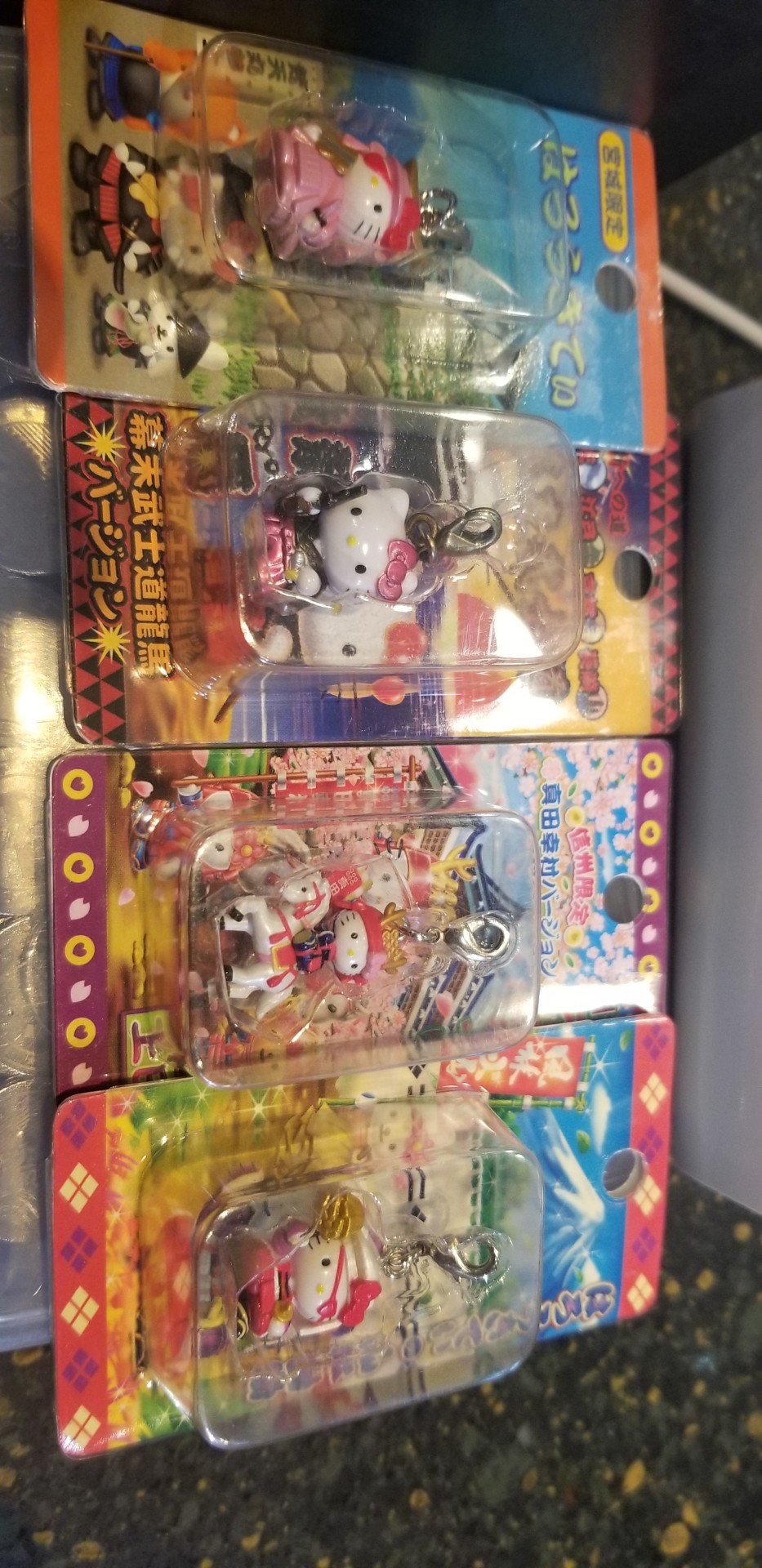


obsessed with these samurai hello kitty charms we got in at work. did I drop a chunk of change on them? absolutely. the one on the horse is sanada yukimura and the one in my hand I believe has to be date masamune (the helmet? the eyepatch??). the one on the bottom in the first picture has the takeda symbol but I don't think it's shingen. according to google translate it has something to do with yamamoto castle??? idk but I love them and they're currently weighing my phone down 💖💖
20 notes
·
View notes
Text
instagram
This Musha Katana is emblazoned on the saya scabbard with the crest of Oda Nobunaga, the powerful daimyo who is regarded as one of the great unifiers of Japan in the Sengoku Era for his overthrow of the Ashikaga Shogunate. Through clever and innovative military tactics, relentless warfare and economic reform Oda Nobunaga brought much of Japan under his rule.
Available now at Kult of Athena
#Kult of Athena#KultOfAthena#Musha#Oda Clan Katana#sword#swords#katana#katanas#weapon#weapons#blade#blades#Japanese Swords#Japanese Weapons#Asian Swords#Asian Weapons#Battle Ready#1045 High Carbon Steel#Oda Nobunaga#Sengoku Era#Ashikaga Shogunate#Instagram#videos
2 notes
·
View notes
Photo

Isn’t he serene and Cute at this night? He is:)
#Takahashi Rumiko#高橋 留美子#Inuyasha#Inuyasha manga#犬夜叉#Inuyasha time travel#Sengoku era#戦国時代#Warring States period#Inuyasha shonen#Weekly Shonen Sunday#週刊少年サンデー#adventure fantasy romance manga
17 notes
·
View notes
Text
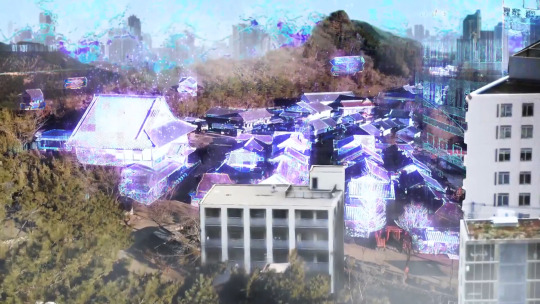
...Exactly how much power does a Vision Driver have (connection to Creation Goddess notwithstanding) if it can regress an area’s architecture 500 years in the past?
#kamen rider geats#geats ep 27#geats spoilers#sengoku era#vision driver#beroba geats#kamen rider beroba
6 notes
·
View notes
Photo
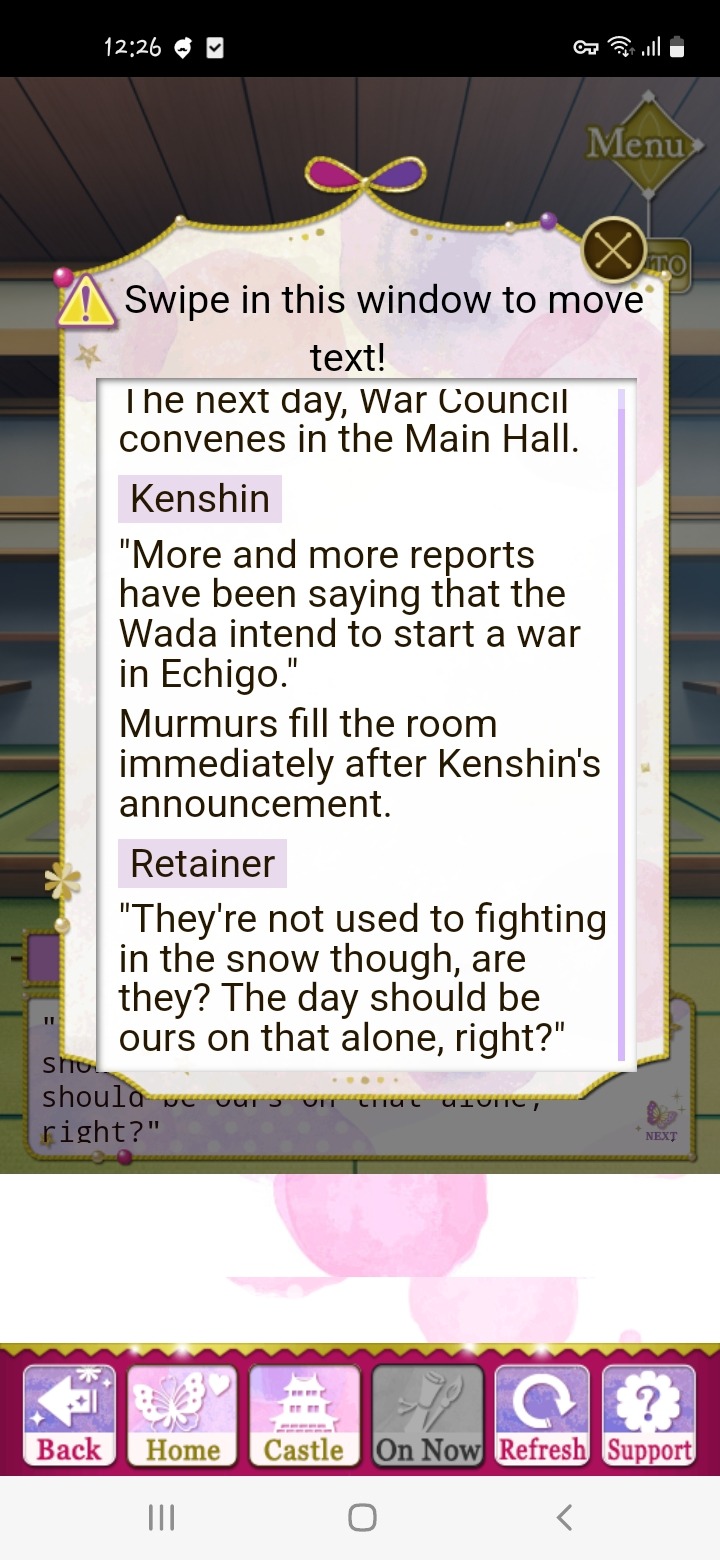

I tried my best to search for this one. There are two battles that somewhat fits the description, but the details are a bit off. I suppose the writer just tweaked the narrative for drama purposes (this is a do-over timetravel AU, after all).
Brief background. The Wada of Kouzuke Province were originally long-time Uesugi vassals, who had been serving since the 1450s. However, when Kenshin’s predecessor briefly lost ground to the Hojo, the then clan leader Wada Narishige switched allegiance to the Hojo. He returned to the Uesugi when Kenshin came to power, but then switched to the Takeda side.
Now about the battle. Kenshin had two fights with the Wada, one in 1563 and one in 1566. I think it might be the second one, since it was the battle that specifically mentioned gun corps, but it could be a mix of both.
The story of the 1563 battle was that Kenshin had an accomplice inside the Wada’s castle. At this point, Wada is only just starting to work on switching his allegiance to Shingen. The accomplice reported this defection. Counting on this accomplice to help break the ranks from within, Kenshin rushed over to subjugate Wada before they turn into enemies, only with a small contingent. However, once he got there, he found that the accomplice had been busted and wasn’t able to do anything. Kenshin killed the accomplice in anger, and tried to attack anyway, but it was naturally a failure.
In 1566, Kenshin tried to attack the same place again. Now that the Wada are officially a Takeda ally, Shingen sent a gun corps (normal guns, not cannons) to assist. Though they were outnumbered, the Wada defenders managed to hold their ground, so in the end Kenshin gave up and went home.
Narrative source: http://www9.wind.ne.jp/fujin/rekisi/siro/takasaki/wada/wada.htm
(Wikipedia and other local city sites also have more or less the same story, with varying degrees of detail included)
As you can see in the supposed “reality”, Kenshin was the one who initiated the attack, while in the game the Wada is the one who was about to invade. I suppose “an attack is inevitable” can be extrapolated from the description of Wada defecting to Takeda. Still, they didn’t actually do anything yet, supposedly.
The cannons are... obviously fictive addition for drama purposes. It kind of reminded me of Disney’s Mulan movie, where Mulan blasted cannons at the mountains to bury the Huns under avalanche.
The Sengoku lords don’t really have cannons, despite having plenty of guns to go around. The Christian lords of the Western provinces were apparently gifted some by the Europeans, but there were none in the central and Eastern regions. The European priests were shocked when Nobunaga supposedly brought out cannons on his warship, because they’ve never seen anyone from that area owning even a single cannon ever.
#uesugi kenshin#wada castle#event route#slbp#samurai love ballad party#commentary#sengoku era#sengoku period
10 notes
·
View notes
Text
The true origin of the sandal warming story??
I'm going to start by quoting a story to you. It can be found in "Tales of the Samurai", which was translated by Miyamori Asatarou. You can read the entire text in this link here, but here's the relevant segment (I apologize for length):
While his lordship thus soliloquized, Heishiro, the sandal-bearer—Makabé Heishiro as he was called from his birthplace, Makabé in Hitachi, a surname being a luxury unknown to the third estate—waited without. Having adjusted his master’s footgear there was nothing more to do till he should come out again. But presently Heishiro observed that the snowflakes fell and lay somewhat thick on his valuable charge. He hastened to brush them off with his sleeve, but more flakes fell, and again the geta (clogs) were covered with icy particles.
“This will never do,” he said to himself. “His lordship disdains to wear tabi (socks) even in the coldest weather, deeming it a mark of effeminacy; should he place his bare feet on these damp geta he will assuredly catch cold. I must keep them warm and dry for him.”
So the good fellow in the kindness of his simple heart took up the heavy wooden clogs, and putting them in the bosom of his garment next to his skin, continued his patient waiting.
[...]
Heishiro had just time to put the geta straight on the large stone step at the entrance before the double doors slid open fight and left and Masamuné appeared, young, imperious.
He slipped his feet on to the geta. How was this? They felt warm to his touch! How could that be in such freezing weather? There could be but one explanation. That lazy lout of a sandal-bearer had been using them as a seat—sitting on the honourable footgear of his august master! The insufferable insolence, of the fellow!
In a passion at the supposed insult he caught the offender by the nape of his neck, and shook him violently, exclaiming between his set teeth, “You scoundrel! How dared you defile my geta by sitting on them! You have grossly insulted me behind my back! Villain, take that....”
Catching up one of the clogs which he had kicked off, he struck the poor servitor a heavy blow between the eyes, which caused him to reel stunned and bleeding to the ground.
Does this story sound familiar?
If you know about Nobunaga well enough to have heard of the sandal story, you might already noticed this is a little weird.
If you are not familiar with it, I tell you here that this is a standard narrative commonly associated with Nobunaga and Hideyoshi. Barring the oddly specific detail about not wearing socks for it being "effeminate" (it's a first for me), just swap out the name of "Masamune" for Nobunaga and the sandal bearer with Hideyoshi and you get the gist of it.
In the above story, Masamune's anger could not be calmed and the sandal bearer left his service. However, the sandal bearer then eventually became such a celebrated monk of high standing. Masamune ended up inviting him to be the abbot of Zuigan-ji, the temple he had recently restored, without knowing that the master was the same sandal bearer he got angry at.
In the Nobunaga version, Hideyoshi was able to prove his innocence, which led to Nobunaga gaining appreciation of his efforts and promoting him.
Once I did a little investigation on the story of Hideyoshi warming Nobunaga's sandals. In the oldest source I was able to discover, the story was originally nothing at all. Hideyoshi kept the sandals warm, yes, but it was very likely what sandal bearers were just supposed to do and no big fuss was made about it. Nobunaga had appreciated Hideyoshi's care for horses, not what he did with the sandals.
The sandals that Hideyoshi warmed in the source I found were zouri, straw woven sandals. The story I quoted above talked about a geta, which are wooden platformed sandals (sometimes translated as "clogs"). The Nobunaga and Hideyoshi story that were in fictional adaptations or websites indeed flip flop between the sandals in question being zouri or geta. Clearly there is a problem here somewhere.


I believe I have finally found the actual origin of the sandals story, the dramatic one that includes an angry master being angry and accusing the sandal bearer of having sat on the sandals.
The story is narrated in the official website of Engaku-ji, an affiliate Rinzai Zen temple. It was actually the story of a revered Zen master, whose name was Houshin Shousai (or Shouzai) 法身性西.
Master Houshin was born in Makabe 真壁 district in the year 1189, and his name was originally Heishirou 平四郎. The lord he served was one Makabe Tokimoto 真壁時幹. You see now why the sandal-bearer in the above story was named the way that he was?
The narrative was similar to the one from Professor Miyamori's story. Heishirou warmed his lord's sandals, but Tokimoto accused him of having sat on the sandals and threw it at his head (as seen in the "Masamune" story above). Disheartened by this, Heishirou then quit his service and became a monk. He left for China to study Zen, and when he returned to Japan, he became the abbot of Enpuku-ji 円福寺. It wasn't until centuries later that Date Masamune restored Enpuku-ji, and it's now better known as Zuigan-ji 瑞巌寺 (the temple actually kept both names, and its official full name is Shoutou Seiryuuzan Zuigan Enpuku-ji 松島青龍山瑞巌円福禅寺).
Supposing this story was true, then it would appear that people down history just "stole" it and reapplied it to whomever they please. It's actually not about Masamune or Nobunaga or some other iconic Sengoku bushou (who are presumably "more interesting"). The "good ending" of the Nobunaga story had been apparently stolen from another narrative about the shogun Tokugawa Iemitsu and Sakai Tadakatsu (I talked about it in my post).
Once again, this is why I always try to be careful with "just so" stories from the internet. It's fine to use them in fiction, as these has become "established tropes" by now and nobody would be mad if you use them when writing novels or fanfiction.
However, in terms of actual historical truth, I don't take them as fact unless I can verify it in reasonably reliable sources.
#long post#sengoku fake news#date masamune#japanese history#sengoku period#sengoku#samurai#oda nobunaga#toyotomi hideyoshi#hashiba hideyoshi#warring states period#warring states era#sengoku era#warring states
12 notes
·
View notes
Text

Onna-bugeisha
4 notes
·
View notes
Text
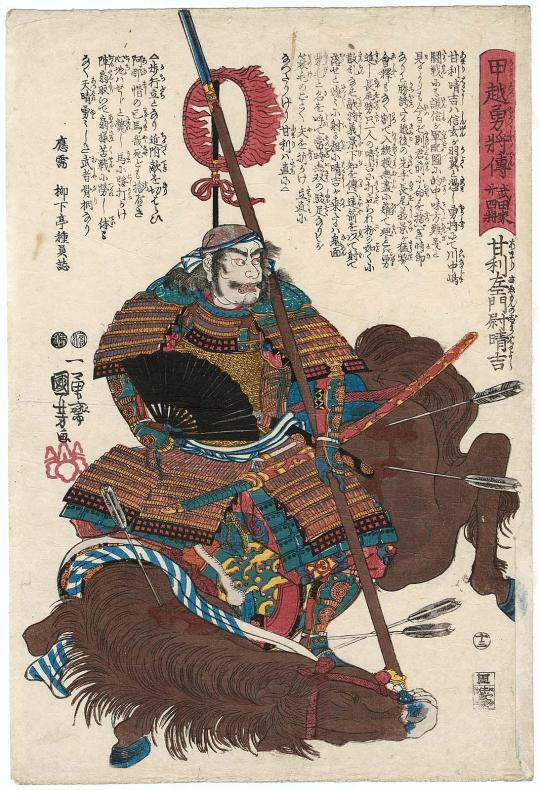
Amari Saemon no jô Nobuyoshi, from the series Courageous Generals of Kai and Echigo Provinces: The Twenty-four Generals of the Takeda Clan, by Utagawa Kuniyoshi, ca. 1848-1849
#fav#art#takeda clan#samurai#sengoku era#sengoku period#takeda shingen#utagawa kuniyoshi#horse#caballo
5 notes
·
View notes
Text
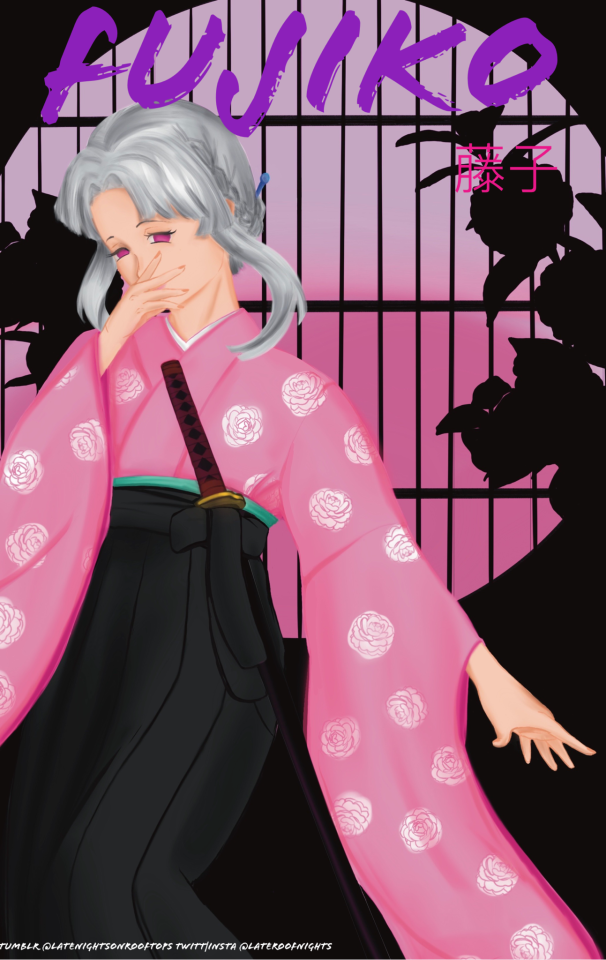
Fujiko (藤子)
——————
Ok, first, im really sorry if i got her name in kanji wrong, google was my friend in this 😅
@minteayoongimakesmewoozi ure right, she is pretty colorful and i love it 😻 hopefully i got kinda close to her description, though with her hair i took some creative liberty. There were two versions and the first was so pretty but pretty similar to Ayame which isnt bad but i wanted to explore different hair styles.
ITS FUJIKO!! UGH I CANT WAIT TO SEE HER MORE IN FITS!
#ayame higuchi#fits#fog in the summertime#demon slayer#Fujiko#oc#sengoku era#a girl with many talents#🥰🥰
2 notes
·
View notes
Text

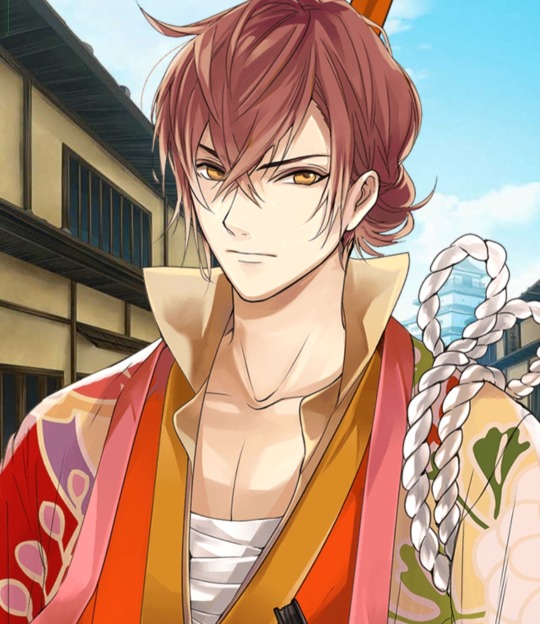

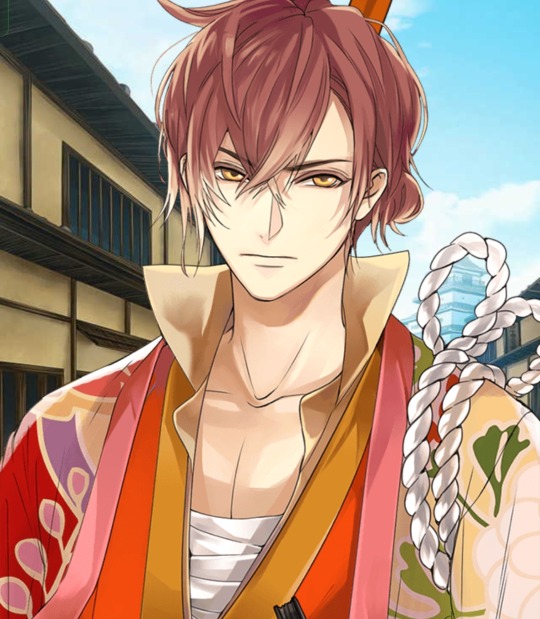
Keiji's facial expression that changes every second. 😗😘
#keiji maeda#ikemen sengoku#keiji's route#art#design#sengoku era#fashion#color#energy pill#two-faced#ikemen#handsome guy#babyyyy#warlord
10 notes
·
View notes